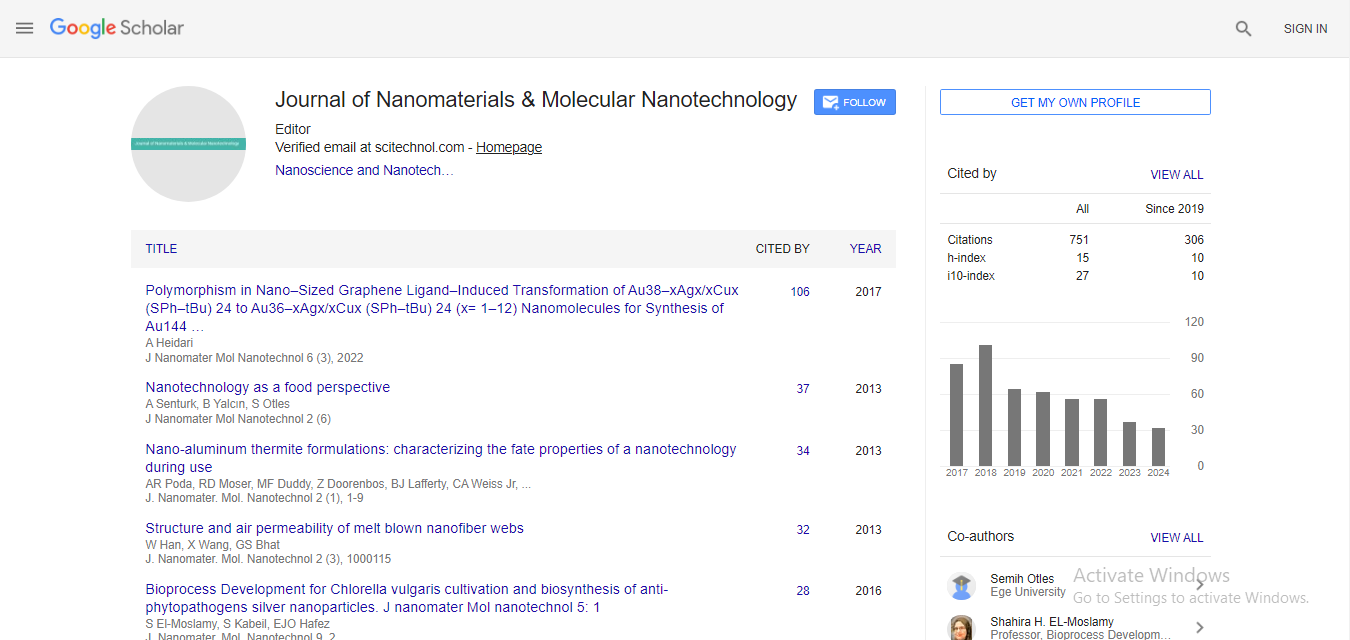Nanofluidics domain and computer simulation of water metabolism in the brain cortex
Ernst Titovets
Republican Research and Clinical Center of Neurology and Neurosurgery, Belarus
: J Nanomater Mol Nanotechnol
Abstract
Brain water metabolism is involved in cell communication, transfer of signaling molecules, neurotransmitters, energy substrates and gases, heat exchange, etc. A number of pathologies including Alzheimer’s disease, idiopathic normal pressure hydrocephalus, migraine, traumatic brain injury and stroke, brain edema, etc. directly or indirectly arise from disorders in brain water metabolism. There are the two mutually excluding basic views at present on brain water metabolism. A conventional theory maintains that the brain nanodimentional extracellular space presents a diffusion barrier to water movement. A new theory, based on an interdisciplinary approach and adopted here, makes it possible to treat the brain extracellular space as a nanofluidic domain where water flow is governed by the slip-flow mechanism. Contrary to the diffusion-barrier theory, the new one suggests fast water movement in the extracellular space. Computer simulations of brain water metabolism have been carried out using a cuboid nanofluidic model. The model encompasses layers I-IIIb of the brain cortex and incorporates a central draining venule surrounded by four penetrating arterioles with the intervening capillary network. Aquaporin AQP4 presents a ratelimiting stage in the overall water transfer across the blood-brain barrier, i.e. between the blood and the brain parenchyma. The extracellular space is viewed as a nanofluidic domain. Computer simulations have produced a detailed 3D topography of brain water metabolism in terms of the volumetric water fluxes. Physiological and pathophysiological significance of the obtained results is discussed. Keywords: Brain cortex, Water metabolism, The brain extracellular space, Nanofluidic domain, Computer simulations.
Biography
Ernst Titovets, M.D., PhD is a researcher, author, translator and interpreter was born in Krasnoyarsk, Siberia. He graduated from the Minsk State Medical Institute and undertook post-graduate research in biochemistry. He earned his PhD degree from the Academy of Sciences of Belarus for his research on endergonic transport of Ca++ by the mitochondria. His Doctor of Sciences Degree in biology he obtained from the St. Petersburg State University, Russia for his pioneering research on the biochemical action mechanism of new aminodervatives of orthobenzoquinone. Appointed to a number of scientific research councils, he has authored or co-authored four research books, 14 patents and over 400 research papers and as an interpreter, he translated three books. As an Author, he wrote a book Oswald: Russian Episode that has appeared in three editions in the USA. The book presents an in deep historic investigation of life of Lee Harvey Oswald, an alleged assassin of the President John Kennedy. Currently he is concentrated on a research on brain water metabolism and related issues conducted from the nanofluidic approach. He is a principal researcher, at the Republican Research and Clinical Centre of Neurology and Neurosurgery in Minsk, Belarus where he heads a scientific research group.
 Spanish
Spanish  Chinese
Chinese  Russian
Russian  German
German  French
French  Japanese
Japanese  Portuguese
Portuguese  Hindi
Hindi 



